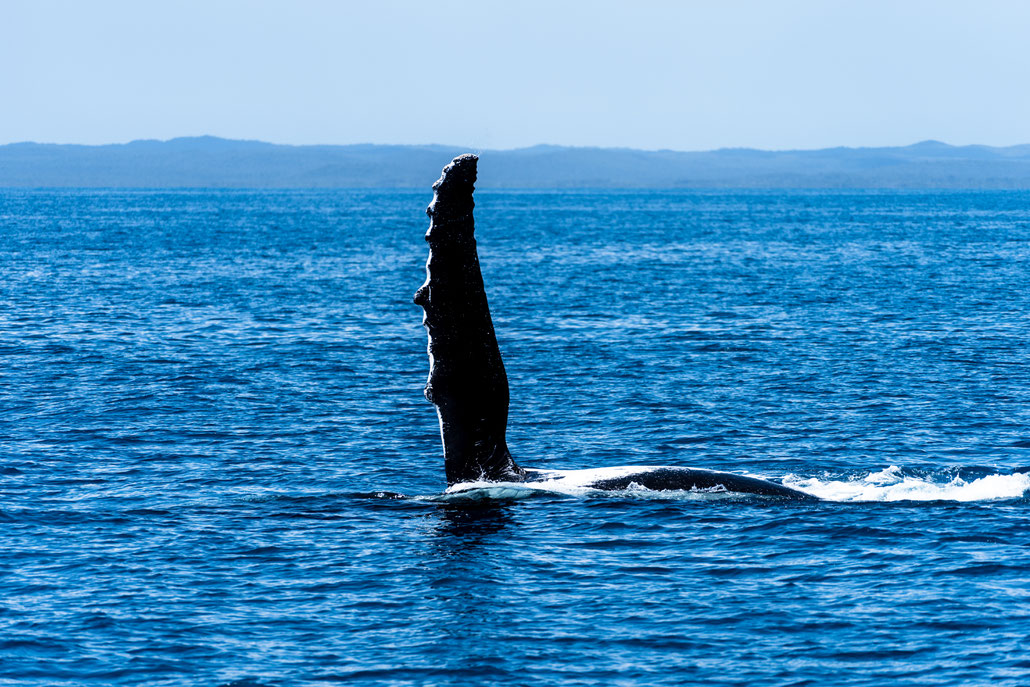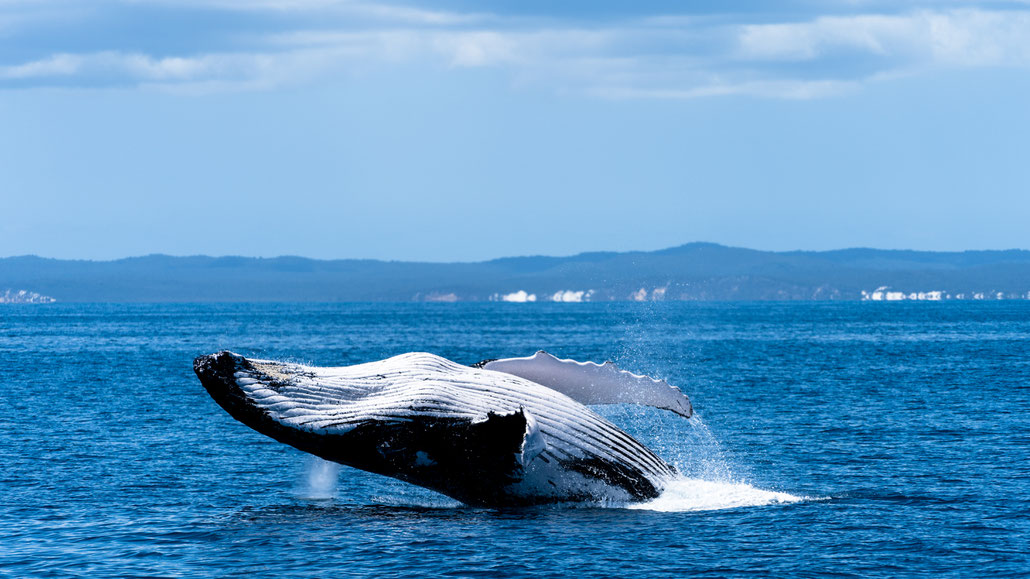Whale Watching isn't something you get to see often when from Germany. This is especially true for the majestic and playful humpback whales. So whenever there is an opportunity to see them - I take it. We were just in time for the season finale of humpback whale watching in Hervey Bay, Australia. It was the last week of daily tours that the team of Freedom Whale Watch & Charters offered. And boy, what a spectacle we were off to!
A Whale Heritage Site
Hervey Bay off the Fraser coast is one of the best spots worldwide to see these marine giants. In season it is a stopover on the east coast of Australia for up to 8.000 migrating humpback whales on their way down to Antarctica for the south summer. The huge sand island Fraser Island (K'gari) protects the east coast of mainland Australia and creates a calm arena for whales to raise their youngsters - a calf kindergarten if you will. The place is shallow, sheltered from the ocean waves and warm. The only thing to make sure is to come in season which is July to November. In 2019 Hervey Bay was awarded one of just two Whale Heritage Sites in the World by the World Cetacean Alliance. Congrats, well deserved!
The three "B"
Since we wanted to increase our chances of seeing whales at the end of season we opted for a full day tour. We went way out into Platypus Bay next to Fraser Island and left all the half day tour boats behind. First thing you learn on board is there are three mains things to look for with humpback whales and all beginn with a "B":
- a body part, i.e. a fluke or a flipper,
- a blow or
- a breach.
There is no guarantee at all to see even one of them during a tour, but in peak season some people even call Hervey Bay the 'Cirque du Soleil' of whale behaviour. Sneak peak, we got them all that day!
Mothers with calves
Migrating 10.000 km every year
Hervey Bay is not where humpback whales mate or give birth, but it is a spot to rest on their way south or north. This is especially true for mothers and calfs. The mothers teach their calfs survival skills for the deeper and colder waters in Antarctica. This is why you sometimes see calfs breaching at Hervey Bay. They try to imitate their mothers' behavior. The humpback leave Hervey Bay for Antarctica at the end of the season to feed in the cold and nutrient-rich waters. But during this migration they don't feed at all and live off their body fat. Every year the migration is about 10.000 km (5.000 km one way). When autumn arrives in the southern hemisphere they come back north to the subtropical warmth to give birth and the cycle starts again. You can check this fact sheet of the Australian Government for further information.
The holy grail of whale watching: A breaching calf
Humpback whales: Facts and figures
- Humpback whales (Megaptera novaeangliae) are a species of baleen whales and therefore don't have teeth.
- They are 12 to 16 m in size and weigh between 25 to 30 tonnes.
- Humpback calfs can weigh up to 900 kg at birth and have 3 to 4m in size.
- Male humpback whales seduce females with their whale songs. Some whale watching companies feature whale songs with a hydrophone.
- Humpbacks normally life solo, but form larger pots for migration.
- The gentle giants are amongst just a few animals to be able to recognise themselves and are highly intelligent.
- Humpback can eat up to 2,5 t of krill and plankton per day.
- The average life span of humpbacks is up to 50 years.
In case you want to learn more about humpback whales or whales in general and their migration routes check Wild About Whales. And if you want to enjoy the humpbacks at Hervey Bay this place is about a 3,5 h trip up north from Brisbane. Make sure to spent at least two nights there and visit the stunning Fraser Island as well! You can also find plenty information about the coastal town of Hervey Bay, Fraser Island and a blog with lots of additional things to enjoy in the area via Discover Hervey Bay.
if you enjoyed this you might also take a look at my Australia photo gallery!














Write a comment
Sue Reid (Tuesday, 03 March 2020 13:08)
Thanks for sharing your experience whilst onboard Freedom III Whale Watch. We are pleased you had such a wonderful experience and thought to share your post with us. WE hope to welcome you back next time you visit Hervey Bay.
Jens Assmamnn (Wednesday, 04 March 2020 09:02)
Dear Sue and Jen, Thank you very much for the nice feature on https://freedomwhalewatch.com.au/whale-watching-featured-on-jens-assmann-photography/. Loved the day tour with Freedom Whale Watch and hope to be back with you some day. Cheers, Jens